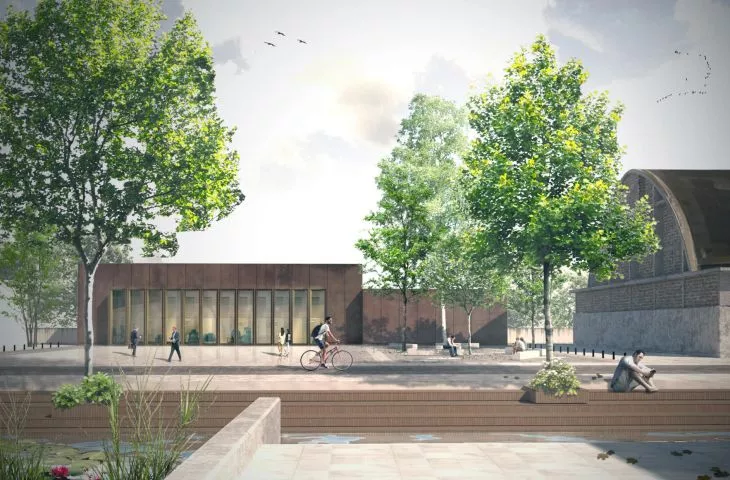Work submitted for the competition
"Best Diploma Architecture".
The subject of this paper is an analysis of brownfield sites developing within the boundaries of 19th century cities and a critical look at attempts to revitalize them. These areas are often neglected, separated from the active part of the metropolis and operate mono-functionally.
The Darsena of the title is a harbor dock that is part of the Candiano Canal, built in the 18th century to connect Ravenna to the Adriatic Sea. It is the axis of an extensive industrial zone. The main problem of the area is isolation leading to stagnation and the slow death of the neighborhood. These phenomena emerged as a result of some unfortunate transformations of space and as more barriers - spatial, scenic and communication - were created. Railroad tracks, roads or the canal itself, created to improve communication, became barriers to the spatial development of the city. My goal, therefore, was to redesign the area in such a way as to allow connectivity in every possible direction, to stitch the Darsena area with the city center and nearby residential areas, and to provide residents with a friendly and functional neighborhood.
Darsena
© Agata Trela
It is important to mention here the efforts of the municipal authorities in the process of bringing the Darsena area back to life. The plans are extremely ambitious. Each of the projects developed over the years involves the demolition of most of the old buildings and a major transformation of the spatial structure of this part of the city. The character of the post-industrial area would thus be completely changed. In my opinion, by getting rid of the obvious identity of the place, it is difficult to build a bond between the residents and the revitalized area. Therefore, in my project I assumed preservation of the post-industrial infrastructure and acting exclusively in the area of public space. When defining the new space, I tried to put it in the context of its surroundings and find analogies in existing spatial forms, also referring to history.
site development plan
© Agata Trela
Ravenna is a city that has been strongly connected to water from the beginning. Wanting to take advantage of this, I focused on two activities: creating a public space on the water and introducing water into the public space. Darsena became the compositional axis of the entire establishment - an extension of Via Albertoni, the most important shopping street in the city. Analogous to the network of streets in the center, channels were created on the other side, leading residents of nearby neighborhoods to the main public space on the water. Each has a different character and fits in with Darsena's diverse development. Their location resulted from an analysis of barriers and accessibility relative to neighboring developments. They also became extensions of existing traffic routes. The starting point of each of them is a square - a place for meetings and public events. It then turns into a linear route leading directly to the center - Darsena.
Left: the first barge stop; right: the second stop for the barge - the square
© Agata Trela
Another idea is to find a perpendicular connection between the two banks of the Darsena, in order to simultaneously allow the free passage of ships from the port planned in the first of the channels. This connection will be formed by two elements, fixed and mobile. The fixed parts will be piers, or basically "half-bridges" of wooden construction, with greenery and canopies, for walking or resting. The mobile component will be a barge floating along the canal, between the next stops. It will serve as a means of transportation and a link. Only the meeting of these two elements will make it possible to reach the other bank of the Darsena. The barge will bridge the gap between the separated, fixed parts of the piers.
Left: the third stop for the barge - the city beach; right: the fourth stop for the barge - the walkway.
© Agata Trela
New features have also been introduced, such as the aforementioned marina, city beach, a park on the water, a water sports venue, and arcades and plazas with commercial pavilions.
Agata TRELA
Illustrations: © Author





















































